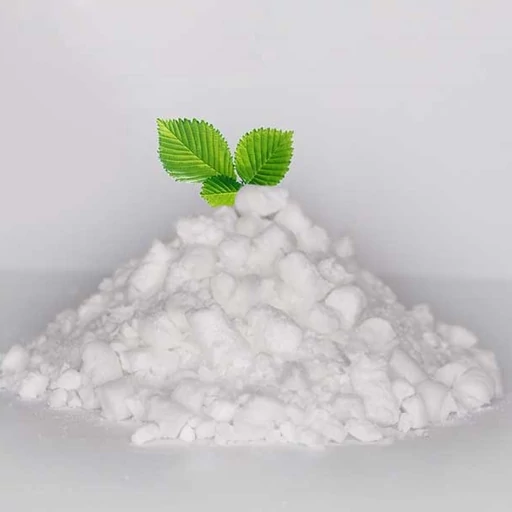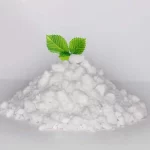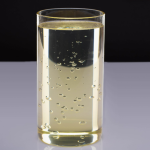Vegetable Paraffin + Types, Applications, and Comparison with Petroleum-Based Paraffins
what will you read...
What is Vegetable Paraffin?The Most Important Types of Vegetable Paraffin1. Soy Wax:2. Palm Wax:3. Coconut Wax:Applications of Vegetable Paraffin1. Candle-Making:2. Cosmetic and Personal Care Industries:3. Care and Therapeutic Products:Advantages of Vegetable Paraffin Compared to Petroleum-Based ParaffinDifferences Between Vegetable and Petroleum-Based Paraffin1. Source:2. Biodegradability:3. Chemical Composition:4. Appearance and Performance:5. Burning and Flame:6. Price:Conclusion
Vegetable paraffin is extracted from natural sources such as soy and palm and is used in candle-making, cosmetic, and personal care industries. In this article, we examine its differences from petroleum-based paraffin.
What is Vegetable Paraffin?
Vegetable paraffin is a type of wax derived from natural and renewable sources such as vegetable oils. Unlike petroleum-based paraffin, which is obtained from refining crude oil, vegetable paraffins are produced by processing oils like
soy, palm, coconut, and rapeseed. In recent years, this type of paraffin has gained attention in various industries due to its environmental compatibility and high safety.
The Most Important Types of Vegetable Paraffin
1. Soy Wax:
One of the most commonly used types of vegetable paraffin, derived from soybean oil. This type of paraffin is widely used in candle-making, lip balms, cosmetic creams, and natural care products. Soy wax has a lower melting point than petroleum-based paraffin and is easily scented.
2. Palm Wax:
Derived from palm oil and has a harder texture compared to soy. Palm wax produces less soot when burned and is very popular for pillar and decorative candles. However, care must be taken to ensure it is sourced from sustainable resources.
3. Coconut Wax:
A soft and fragrant paraffin processed from coconut oil. This type of paraffin is used for luxury candles, facial masks, and high-end cosmetic products. Its main advantage is even burning, odorlessness, and better scent retention.
Applications of Vegetable Paraffin
1. Candle-Making:
Vegetable paraffins are a good option for scented candles due to their high ability to absorb and retain fragrances and clean burn. These candles burn without smoke and with a stable flame.
2. Cosmetic and Personal Care Industries:
Due to their high purity, non-allergenic nature, and moisturizing properties, vegetable paraffins are widely used in creams, lotions, lip balms, and beauty masks.
3. Care and Therapeutic Products:
In paraffin therapy and massage therapy, the use of vegetable paraffin is recommended especially for people with sensitive skin. These paraffins provide high hydration and softness.
Advantages of Vegetable Paraffin Compared to Petroleum-Based Paraffin
-
Environmental compatibility: Vegetable paraffins are biodegradable and derived from sustainable resources.
-
Greater safety for health: They do not produce toxic smoke during burning.
-
High scent absorption: They absorb essential oils better and retain their scent longer.
-
Skin-friendly: More suitable for topical use and do not cause irritation.
Differences Between Vegetable and Petroleum-Based Paraffin
1. Source:
Petroleum-based paraffin is produced from crude oil as a byproduct of refineries, while vegetable paraffin is extracted from natural oils such as soy, palm, and coconut.
2. Biodegradability:
Vegetable paraffin is completely biodegradable and does not harm the environment, whereas petroleum paraffin lacks this feature.
3. Chemical Composition:
Petroleum paraffin may contain compounds such as benzene or toluene, which can be carcinogenic if impure. Vegetable paraffin is free from such impurities.
4. Appearance and Performance:
Petroleum-based paraffins are shinier and harder; whereas vegetable paraffins have a softer and more matte texture.
5. Burning and Flame:
Vegetable paraffins are smokeless and produce a uniform flame, while some petroleum-based paraffins may produce smoke or an unpleasant odor.
6. Price:
Petroleum-based paraffin is usually cheaper, but vegetable paraffin has a higher price due to more complex extraction processes and more limited resources.
Conclusion
Vegetable paraffins, as a healthier, more sustainable, and biodegradable alternative to petroleum-based paraffins, have found a special place in today’s market. For industries such as candle-making, cosmetics, and personal care,
using this type of paraffin offers many advantages. Although its higher initial cost may be a limitation for some consumers, its quality, health benefits, and environmental compatibility make it justifiable.
Petroyl, your partner in informed and sustainable choices.
Our slogan: With us, superior power, competitive success.

















